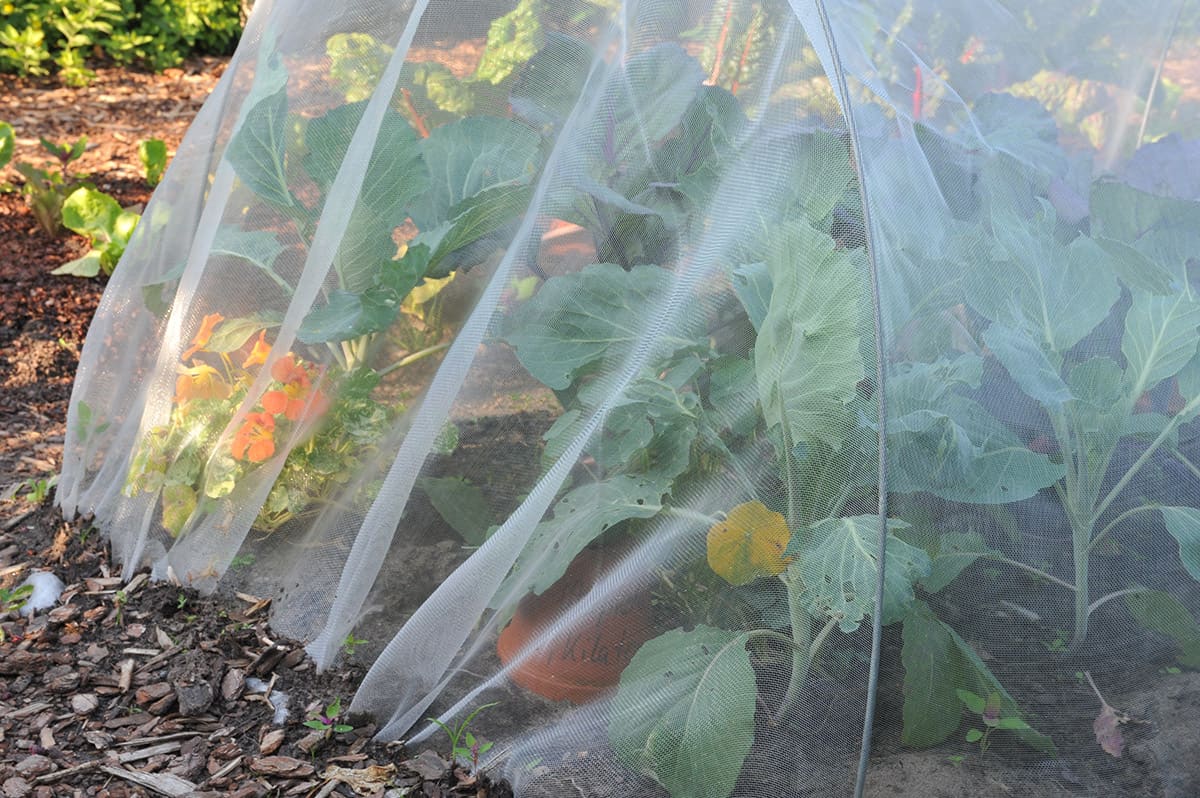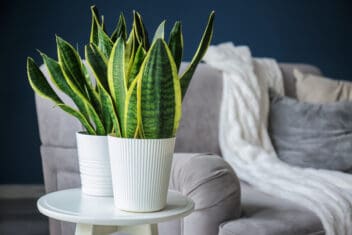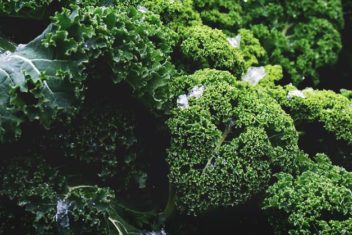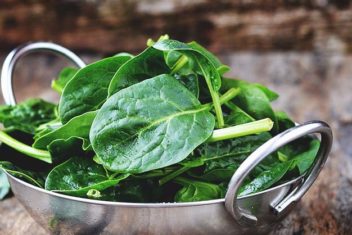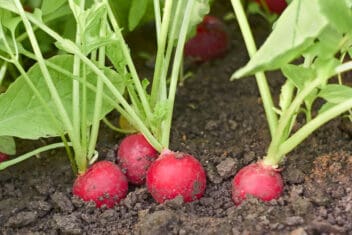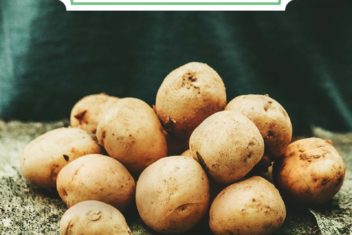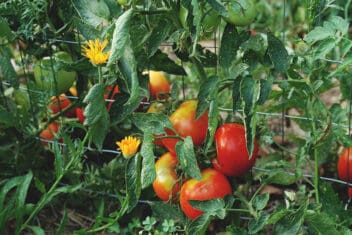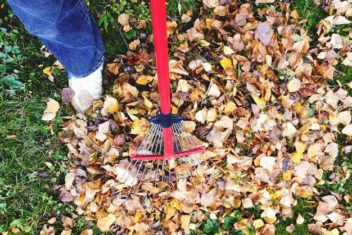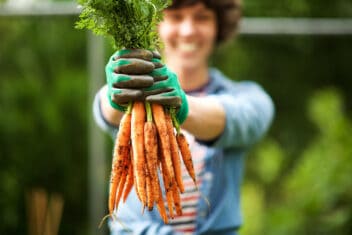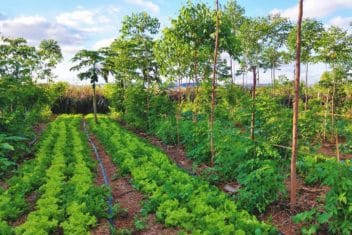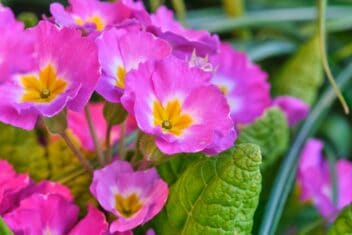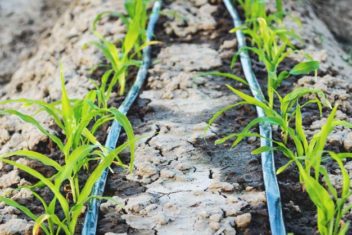The weather can be immensely unpredictable. You’ll think that everything is going well as the weather keeps warming, and then all of a sudden, boom. The temperature drops, and there’s a frost or hail warning to deal with. Enter horticultural fleece.
If you live in an area that gets random cold snaps, hail, or other inclement weather, read on. You’ll find out why this fleece is so invaluable, plus some tips on how to use it to good effect.
What is Horticultural Fleece?
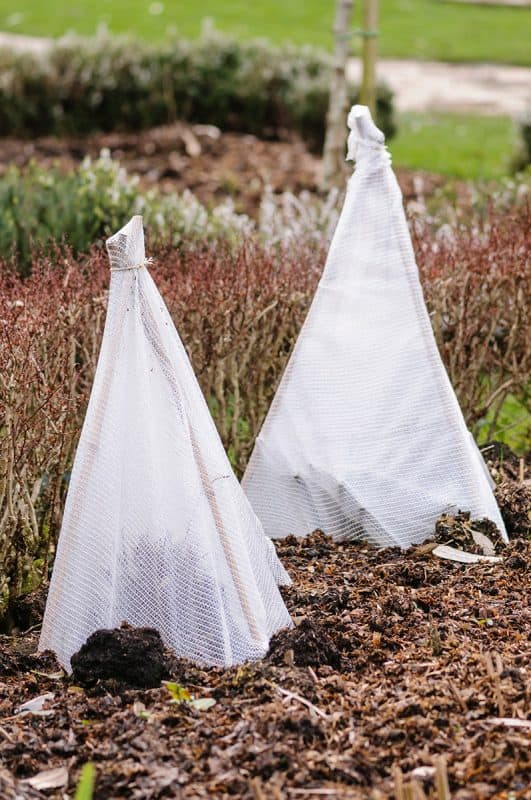
I only learned about how to use horticultural fleece fairly recently, and it’s amazing stuff. You know how we put fleece blankets on the bed or wear fleece clothing in winter to keep us warm? It’s basically the same thing, only for plants.
I don’t know about you, but I’ve had to deal with sudden, unexpected cold snaps when gardening. This has been particularly true gardening in Canada, as well as in higher elevations in the UK. Horticultural fleece can make all the difference.
In addition to helping you manage weather events, it can also protect your plants from pets and pests.
4 Reasons to Use This Fleece
An unexpected heatwave can cause some of your brassicas and herbs to bolt, but that’s about it. In contrast, a sudden cold snap (or hail…) can annihilate your garden. For that matter, vulnerable plants can be susceptible to all kinds of damage. This includes birds, insects, rabbits, and other predators in addition to severe weather.
Since fleece is so lightweight, it can be draped over even the most tender plants. This creates a protective barrier that critters can’t get through.
1. Keep Chickens Away from Freshly Sown Seed
Do you have free-range chickens? Then you’ve probably gotten frustrated with them pecking freshly sown crops out of the soil. Cover those seeds with horticultural fleece until the seedlings have established themselves. This might frustrate your chooks a bit, but at least they won’t destroy all those hours of hard work.
2. Extend the Growing Season
In addition to keeping your plants safe from frostbite, fleece offers another great advantage. Since it’s an insulating blanket, you can extend your growing season in both directions. Early potatoes and greens can stay warm with layers of horticultural fleece. Similarly, you can keep late kale, cabbages, and various root vegetables warm well into wintertime with a layer or two of these fluffy blankets.
I’ve managed to keep tomatoes and peppers safe from early frosts by using these fleeces in autumn. If you’re in zones 6 or below, keep them on hand for just about anything you’ve got growing. Frosts can happen from September onward, and it’s better to err on the side of caution with tender plants.
While we can’t grow vegetables all through the winter in our zone (4b), if you’re in a slightly warmer location, you may be able to. This fleece isn’t just lightweight: it also allows light to pass through. This means that you can keep your hardy winter crops warm (and growing) well after others have wilted into mulch.
3. Protect Young Trees and Flower Bushes
Of course, fleeces can also offer protection to other types of vulnerable plants. Have you planted young fruit or nut trees this season? Then wrap them in a few layers of fleece to keep them warm and safe over the winter. This will improve their chances of survival exponentially.
Not only will their cores be kept warmer, but they’ll also be kept safe from hungry herbivores. Deer in particular love to gnaw upon young saplings. Keep young cherry and apple trees well away from their voracious teeth, as well as hazelnut shrubs and rose bushes.
4. Emergency Insulation
While this isn’t the main use for this type of fleece, it’s another benefit to add to the list. You may have noticed that the weather isn’t exactly dependable. It can change on a dime, and a sudden fierce cold snap can happen literally overnight.
Having a fair bit of this fleece on hand means that you can put together an impromptu insulating layer for your chicken coop, rabbit hutch, or other outdoor small animal enclosure. Truth be told, you could even use it to keep yourself warm in an emergency situation. Like most other supplies, it’s better to have it and never need it, than find yourself in a situation where you need it, and you don’t have it on hand.
Tips for Using Horticultural Fleece
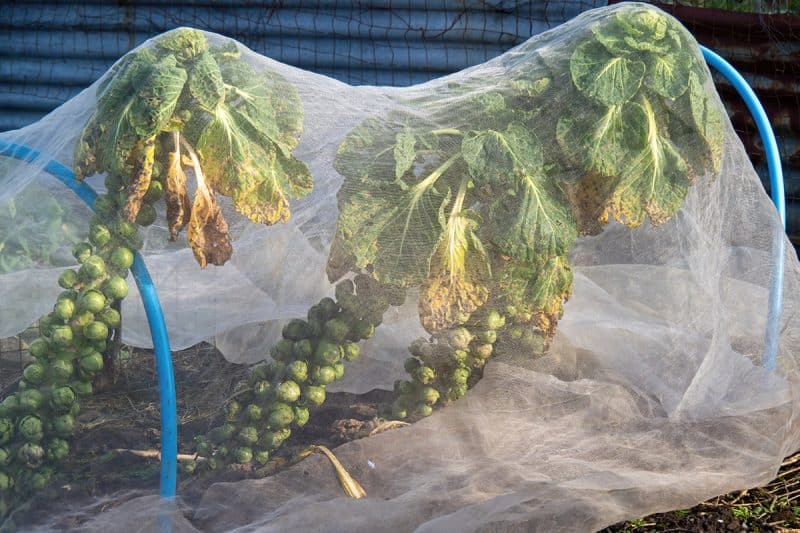
This fleece is immensely versatile, but there are definitely some tips and tricks to using it well.
Store it Nearby
I can’t stress this one enough. Keeping your horticultural fleece stored near your most vulnerable plants can mean all the difference to their survival. Seriously, every second counts when it comes to saving your seedlings. You may think it’s a great idea to store your fleece in the basement or garage, but how long does it take for you to get in there, grab the fleece, and then unroll it?
Nuh. Keep it rolled up and ready in a long plastic bin nearby.
Position the bin close to your vulnerable plants in an area where it won’t block sunlight. Then weigh it (or secure it with pegs) so it doesn’t tip over, and rig a wooden or metal bar through it. Wind the fleece around that bar so you can unroll it in just a few seconds.
Another option is to rig it up against a wall, under a tarp or protective ledge to keep the weather off it.
Invest in a Lot of Pegs
Remember that this fleece is super lightweight. This is great for not crushing your wee seedlings and herbs, but also means that it can poof elsewhere with the slightest breeze. Whether you’re only using a couple of fleeces or several of them, you’ll need a LOT of pegs to keep them in place.
The best ones to use are the U-shaped pegs specifically designed for horticultural fabrics. Single pegs can come loose really easily, whereas U-shaped ones hold the fabric down securely. Kind of like stitches. I recommend getting about 3x more than you think you’ll need. This is because you’ll inevitably lose some to high winds, critters, and tossing them around in frustration.
Downsides to Using Horticultural Fleece
Just like every other tool, there are pros and cons to this fleece as well. We’ve gone over the pros, so let’s take a look at some of the cons.
1. Encourages Fungal Blights
So, you know how this fleece keeps the plants warm by insulating them? Well, that also warms the surrounding area. Additionally, it traps a fair bit of moisture because it isn’t permeable. What happens when heat meets moisture in a growing environment? That’s right: rot.
When you use horticultural fleece, you run the risk of cultivating some enthusiastic Botrytis pathogens and/or downy mildew. This often happens when people protect early strawberries with fleece, only to find their beautiful berry crops turned to furry moosh.
Only use the fleeces when absolutely necessary, and let them air/dry out in hot sunshine on a regular basis.
2. Hinders Pollination
Tender crops that need insect pollinators can fail to thrive under fleeces. After all, if you need bees to fertilize your berries, cucumbers, squashes, etc. and they can’t get through the weave, you’re not going to get any crops.
If you’re going to cover your plants during their flowering period, you need to be diligent with the fleece. Only cover the plants at night, so they can get plenty of bug lovin’ during the day.
3. Not Ideal for Organic Gardening
If you’re growing organic (and trying to live as organically as possible), you may not want to incorporate regular horticultural fleece into your gardening repertoire. After all, they’re woven from polyester or polypropylene—both of which are plastics. And these plastics will undoubtedly shed particles into your soil, which will leach into your plants (and the water table), etc.
Additionally, since this stuff is flimsy and tears easily, it usually needs to be replaced annually. That’s not exactly sustainable in the long term. If you have foxes or raccoons around, you can bet that they’ll tear your fleeces to shreds before you can blink. Sure, you can replace the fleeces if you have the budget to do so, but they can’t be recycled, so the damaged ones will end up in landfills.
An alternative to plastic fleece is wool-based garden felt. It’s a lot pricier than the standard type, but it’s not going to shed microplastics into your garden. Additionally, it’s better as a base, or a covering for trees and hardy plants than it is as a lightweight covering.
The Pros and Cons of Horticultural Fleece
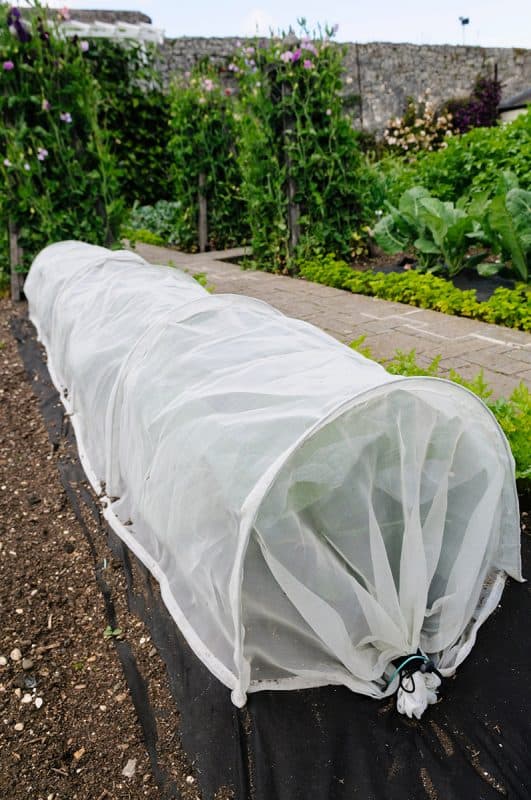
As you can see, there are both pros and cons to using horticultural fleece in your garden. You’ll need to decide whether the pros outweigh the cons for your needs. For most people who live in colder zones, having some of this fleece on hand can make a massive difference in terms of crop survival.
These fleeces are of huge benefit for fending off pests like cabbage white butterflies and carrot flies. But they will shed microplastics with every use.
If you feel that your garden endeavors would benefit from these fleeces, then be sure to grab several of them. Caring for them well should make them last longer, and your crops will undoubtedly thrive under their warm embrace.
